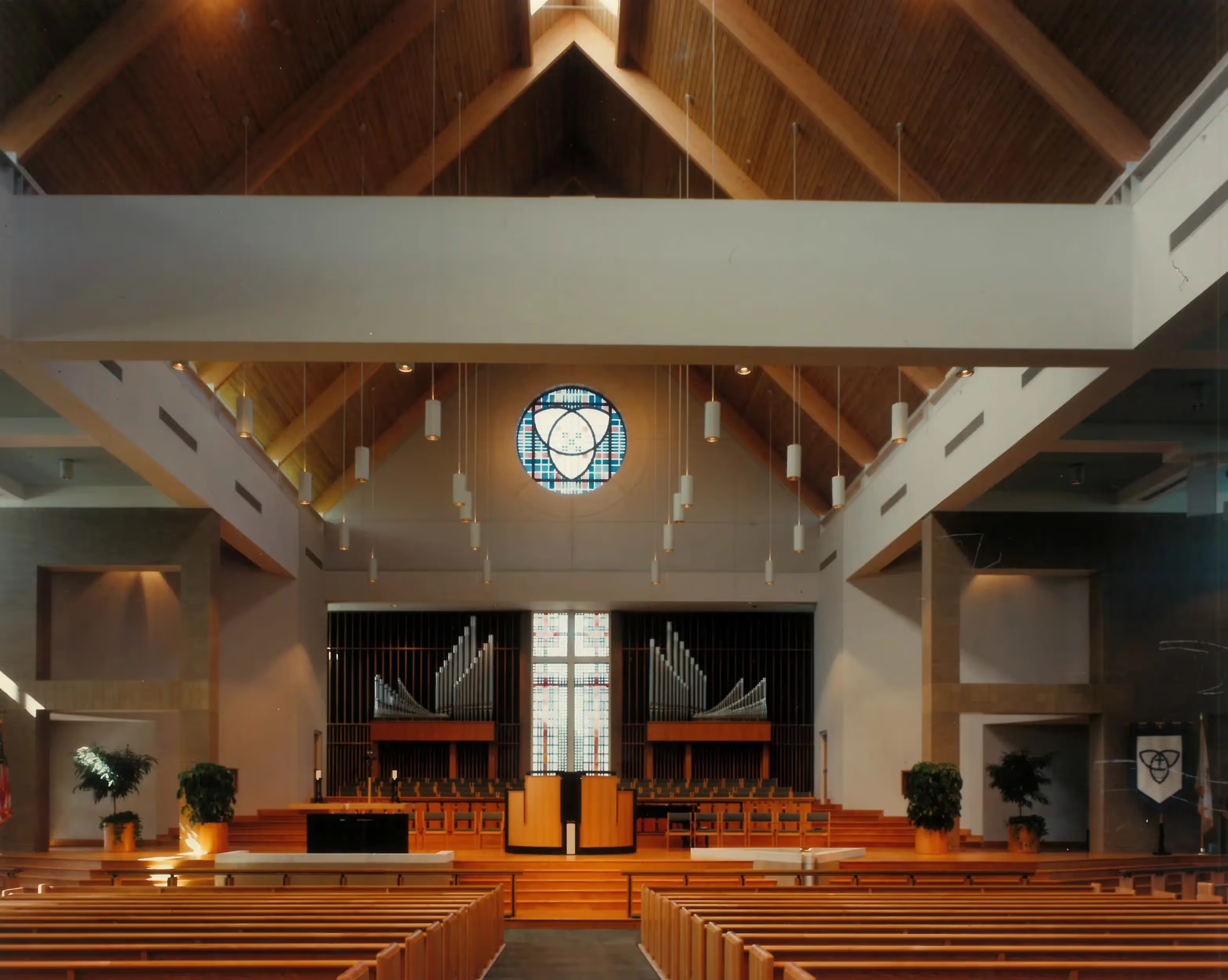
When you think about a church building, you likely envision a structure that stands the test of time. Often, the building is old and only used on Wednesdays and Sundays. But a church is also a close-knit community that does more than worship. And when a congregation outgrows its current building, it’s time for a new one.
We partnered with Centenary United Methodist to design a new church building on their 13-acre campus. Long term value was the priority. And designing a structure that was more than a house of worship.

The site is visibly situated on a highly traveled road and adjacent to a growing neighborhood with concerns about a big church building visible from their backyards. Because of the topography, we were able to solve this problem by leaving the three acres (which included a steep drop-off) on the back side of the church in its natural state. The buffer zone is now maintenance-free and has become a micro-habitat for birds, insects, and other creatures. The addition of a simple nature trail has merged the two areas, enhancing the neighborhood.
Because the congregation needed a space to build community, we designed ample space for physical activity, including a walking track, gym, and wellness space for exercise and athletic activities. Two large pivot doors allow the narthex (or church foyer) to remain open-air on good-weather days and lead to a central outdoor courtyard that links the worship space, the fellowship hall and gym, a meditation garden and chapel, and administration spaces. The flow of the spaces encourages gathering and fellowship before and after services and activities.
We made sure that our design honors Methodist tradition with an eye toward the future. The sanctuary features 1,200 seats, sloped to allow congregants an optimal view of the central pulpit, pipe organ, and baptismal. We also designed acoustical treatments to maximize a sophisticated sound system, enhancing worshippers’ experience.

.webp)
.webp)